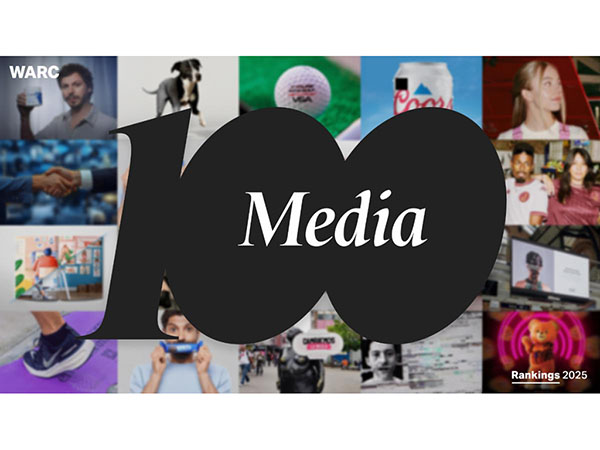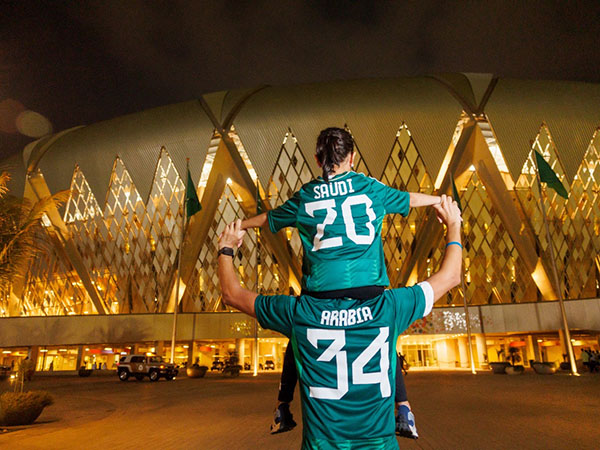News - Advertising
Peering into the future
January 31, 2018
Alex Paquin, managing director, Nomads Dubai

Experience-driven brand collaborations
Nearly 20 years ago Louis Vuitton sued Supreme for unauthorised use of its monogram. Fast-forward to 2017 and there are nearly 10 co-branded LV x Supreme pop-up streetwear retail experiences in major cities around the world. Spotify and Uber recently joined forces to create ‘Soundtrack for Your Ride’. I don’t think I need to explain this concept. In 2018, expect to see even more brands partnering to create unique experiences neither brand necessarily has the audience permission to authentically execute on their own.
Micro-influencers become standard play
In 2018 a micro-influencer strategy will become an ingrained part of the annual marketing calendar for more leading brands. Micro-influencers used to be a (usually disorganised) way for brands with smaller budgets to still participate that couldn’t necessarily afford the hefty half-million dollars per post ticket to get a Kardashian touting your wares on Instagram. However, now even leading brands are identifying this tactic as powerful tool for reaching niche audiences, and activating a loyal and hardworking network. Not only will we see more influencers become brand ambassadors in 2018, but we’ll also see more platforms come online that easily facilitate identifying, managing, paying, and measuring a brand’s stable of micro-influencers.
Voice-first user interfaces will change our buying decision process
With the proliferation of voice-enabled speakers in homes, people are shopping more frequently via Voice-first Interface – creating a new medium for product promotion. While Amazon is rumoured to be in talks with major FMCG companies such as P&G about promotional opportunities, this new frontier leads me to believe our buying decision process will be greatly impacted. While a traditional ecommerce ‘Click to Add-to-Cart’ interface made it impossible to ignore product comparisons and customer reviews, it’s very likely that in the future, for purchases under a certain price, people will begin to let Alexa decide which brand of kitchen roll, or detergent to buy for them.
Nour Abou Alwan, chief creative officer, Mirum MEA

2018 comes heavy with new challenges in an environment of collisions, instability and shifts. Technology, data and automation will play a bigger role in businesses as they shape consumer experiences in 2018.
DEPE – Where the borders of physical and digital are blurred
Digitally Enabled Physical Experience becomes the new foundation of stores – bricks and mortar are now bricks and bytes. The IoT will help re-invent the traditional store through smart merchandising, display and staffing strategy. Transaction, interaction and footfall metrics powered by retail platform infrastructures will breathe life into retail stores and transform them into rich data centres that will help brands better understand consumer behaviours.
Mono-channel is the new omni-channel
In their quest to transform, businesses will attempt to break down their legacy channel and operation silos to make space for collaboration, for a more integrated customer centric strategy to better understand their audience. A brand now breathes through a multitude of channels connected by technology-enabled platforms to embrace new experiences and content through more connected channels such as AR/VR, bots and even Voice Interfaces.
Automated narrative and data storytelling
Powered by data analytics and machine learning, content comes at the intersection of a consumer and their data experience. AI will allow for ‘automated narratives’ giving us the ability to understand context and respond with relevant content and experiences reactive in an in-the-moment messaging format and feeding through a long journey of personalisation with CRM. The nature of brand communication will shift to empower consumers with a platform approach, as a foundation to educate, curate and collaborate.
Design remains the hero as it powers experiences, systems, content, dissemination models and products that embrace empathy, celebrate collaboration to delight consumers.
Three trend-inspired shifts anchored in uncertainty, an uncertainty that is begging for resilience to better face what’s ahead, because it is not the strongest of the species, nor the most intelligent that survives. It is the one that is most adaptable to change.
Seyoan Vela, executive creative director, Livingroom

It feels like it’s going to be a tough year for the industry. But it feels like that every year, even when you look back at what were good years. The landscape is always changing and it’s changing faster and faster. But let’s not kid ourselves, we are not an exception, all industries face these same challenges. From journalism and music to automotive and retail. It’s evolution and we have to constantly adapt to survive.
Faster, better, cheaper is the game all businesses are in. Unfortunately for the communications industry this isn’t as simple as changing a piece of machinery. We are a people business and having the right talent is a big challenge for the industry as newer, shinier options become available. I foresee that the brightest talents will continue to be lured by the attraction of the big social media players, start-up opportunities and increasingly going client side.
The excesses of award shows will continue to be being reigned in. The holding companies have not only started to fall out of love with Cannes, in these tough times on the bottom line, they seem to be questioning their unjustifiable expenditure on work and awards that are created for vanity rather than rewarding client business challenges.
On a positive note, as an indirect result, I feel that there will be a continued improvement in the standard of real work. In Dubai, if you look at some of the work done by Leo Burnett for du, by FP7 for 1/JBR, and Impact BBDO for Snickers and Centrepoint this is all real work that the public is seeing, engaging with and it’s helping to lift the overall standard of communication in the market. It’s raising the expectations of what advertising can and should be. The faux charity advertising so beloved of agencies looking to win awards in the region is becoming more irrelevant. Charity work in the region has gone from being ethical, to comical, to farcical and now downright immoral. I think there will be growing push back against exploiting the sincerity of charities for our industry’s own dubious ends.
This should leave the industry in a far better place come the end of the year. I expect there will be some massive shake ups in the market as survival of the fittest claims some agency scalps but those that make it through will be leaner and fitter and better placed to push the industry forward.





.jpg)






